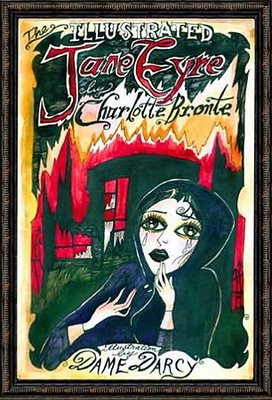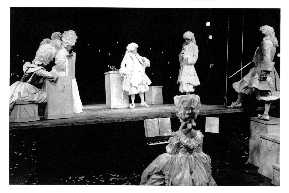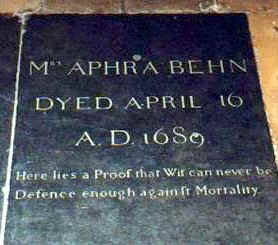Joanna Baillie
Joanna Baillie (
September 11,
1762-
February 23,
1851), Scottish poetess and dramatist. Baillie was very well-known during her lifetime and, though a woman, intended her plays not for the closet but for the stage. Admired both for her literary powers and her sweetness of disposition, her cottage at Hampstead was the centre of a brilliant literary society. Baillie died at the age of 89, her faculties remaining unimpaired to the last.
Contents
1 Biography
2 Literary and dramatic works
3 Defending her works as stage plays
4 Religious writing
5 Philanthropic efforts and literary advice
6 Reputation and legacy
7 External LinksBiographyBorn at the manse in
Bothwell in the county of
Lanarkshire (now
South Lanarkshire), Scotland. Her father Rev. James Baillie (c.1722–1778) was a Presbyterian minister and briefly, during the two years before his death, a Professor of Divinity at the
University of Glasgow. Her mother Dorothea Hunter (c.1721–1806) was a sister of the great physicians and anatomists,
William and
John Hunter. The Baillies were an old Scottish family, and claimed among their ancestors the Scottish patriot
William Wallace.
Joanna Baillie was the youngest of three children; she had had a twin sister, but this child had died unnamed a few hours after her birth.
Baillie grew up in close companionship with her sister, Agnes (1760–1861), and brother,
Matthew Baillie (1761–1823), who became a celebrated London physician.
Baillie’s early years were marked by a passion for the outdoors. Uninterested in books, she preferred playing in the garden, riding her pony, splashing on the banks of the
River Clyde, and listening to ghost stories by the fireside. Baillie’s own gift for narrative invention revealed itself early in stories told to her companions or acted out in impromptu amateur dramatics.
In 1769 the Baillies moved from Bothwell to
Hamilton, South Lanarkshire, where Rev. Baillie had been appointed to the collegiate church. A few years later, at the age of ten, Joanna Baillie was sent to
Glasgow to attend a boarding-school known for “transforming healthy little hoydens into perfect little ladies” (Carswell 266). Her intellectual and artistic faculties were here stimulated, and she displayed a talent for drawing, considerable musical ability, and a love of mathematics. Above all, however, was her facility in the writing and acting of plays. It was in Glasgow that she visited the theatre for the first time, kindling a passion which was to continue for the rest of her life.
With the death of their father in 1778, the Baillie family found themselves with little to live on. Matthew Baillie went to Balliol College, Oxford, following in his uncles' footsteps in the study of medicine. Mrs. Baillie and her daughters retired to Long Calderwood, her family home near
East Kilbride, where they led quiet lives as country gentlewomen.
Dr. William Hunter of Windmill Street, London, died in 1783, leaving Matthew Baillie his house and private museum collection (which is now the
University of Glasgow’s
Hunterian Museum and Art Gallery). The following year Joanna, Agnes, and their mother moved to London to keep house for Matthew. There Joanna Baillie had access to literary society through her aunt Anne Hunter, the wife of Dr. John Hunter. Anne Hunter was a poet of some renown and the hostess of a salon, which included among its circle
Fanny Burney,
Elizabeth Carter, and
Elizabeth Montagu. Encouraged by her aunt’s example, Baillie began to write poetry. While at Windmill Street, Baillie also began seriously writing drama. She had a ready supply of books and studied the French authors
Corneille,
Racine,
Molière, and
Voltaire, as well as
Shakespeare and the older English dramatists.
In 1791, Matthew Baillie married Sophia Denman, the daughter of a leading obstetrician, and relocated to the more fashionable Grosvenor Street. Mrs. Baillie and her daughters settled, after two or three moves, in
Colchester. There, Joanna Baillie conceived the idea of her great work, the
Plays on the Passions.
By 1802 Joanna Baillie had moved from Colchester to
Hampstead, then on the outskirts of London, where she and her sister passed the remainder of their lives. In 1806 Mrs. Baillie died. The two sisters, having inherited a small competence from their uncle Dr. William Hunter, chose not to marry. They were on intimate terms of friendship with many eminent figures in the arts and sciences, and were sociable, hospitable, and much admired and visited.
Anna Laetitia Barbauld and
Lucy Aikin were neighbours and close friends, and
Sir Walter Scott was a regular correspondent with whom Joanna Baillie stayed in Scotland and who visited her whenever he was in London.
In 1823, Baillie's much-loved brother Matthew died. His children and grandchildren continued to display the affection and pride in their aunt's achievements which had always marked the family. As she reached her seventies, Baillie experienced a yearlong period of unusual ill health which left her too weak to keep up her correspondence. However, she recovered and returned to her work.
Joanna Baillie was anxious that all her works with the exception of her theological pamphlet (see
Religious writing) be collected in a single volume, and had the satisfaction of seeing this ‘great monster book’ as she called it, which appeared in 1851, shortly before she died. Though no longer robust—‘Ladies of four score and upwards cannot expect to be robust, and need not be gay. We sit by the fireside with our books’ (Carhart, 62)—she had remained in good health until the end. She died in 1851 in Hampstead, having almost reached her ninetieth year. Her sister, Agnes, lived on to be 100. Both sisters were buried alongside their mother in Hampstead parish churchyard, and in 1899 a sixteen-foot-high memorial was erected in Joanna Baillie's memory in the churchyard of her birthplace at Bothwell.
Literary and dramatic worksPoetry
1790
· Baillie’s first publication: Poems: Wherein it is Attempted to Describe Certain Views of Nature and of Rustic Manners. Baillie later revised a selection of these early poems which were reprinted in her Fugitive Verses (1840).
· Her first poem, ‘Winter Day,’ was evocative of the winter sights and sounds in the neighbourhood of Long Calderwood.
1821
· Metrical Legends of Exalted Characters, which told in verse the heroic stories of such historical figures as William Wallace, Christopher Columbus, and Lady Grizel Baillie. These were inspired in part by the huge popularity of Walter Scott's heroic ballads, her enthusiasm for which had, she admitted, made writing drama 'less interesting for a time' (Baillie, ‘Memoirs’).
1836
· three volumes of Dramatic Poetry.
1840
· encouraged by her old friend the banker poet Samuel Rogers, Baillie issued a new collection, Fugitive Verses, some of which were old and some recently written. It was generally agreed that her popular songs, especially those in Scots dialect, would live on.
1849
· Baillie published the poem Ahalya Baee for private circulation [subsequently published as Allahabad (1904)].
Plays
1790
· a tragedy, Arnold, which was never published.
· ‘a serious comedy’ which was later burnt.
· Rayner was written, though it was heavily revised before it was published in Miscellaneous Plays (1804).
1791
· Plays on the Passions first conceived: Baillie began by writing Basil, a tragedy on love, The Tryal, a comedy on love, and De Monfort, a tragedy on hatred.
1798
· the first volume of Plays on the Passions published anonymously under the title of A Series of Plays. In a long introductory discourse, Baillie defended and explained her ambitious design to illustrate each of the deepest and strongest passions of the human mind. The plays, the author explained, were part of a larger design and were a completely original concept. They arose from a particular view of human nature in which sympathetic curiosity and observation of the movement of feeling in others were paramount. Real passion, ‘genuine and true to nature’, was to be the subject; each play was to focus on the growth of one master passion. This unusually analytic approach generated much discussion and controversy, and in “a week or two Plays on the Passions was the main topic of discussion in the best literary circles” (Carswell 273). The authorship, though at first attributed to a variety of established male and female poets, was revealed in 1800 in the title-page of the third edition.1800
· De Monfort was produced at Drury Lane, London, with John Kemble and Sarah Siddons in the leading parts. Splendidly staged, the play ran for eleven nights but was not a theatrical success. Henriquez and The Separation were coldly received.
1802
· second volume of Plays on the Passions published under Joanna Baillie's name, with a preface which acknowledged the reception given to volume one: ‘praise mixed with a considerable portion of censure’. Volume 2 consisted of The Election, a comedy on hatred, Ethwald, a tragedy in two parts on ambition, and The Second Marriage, a comedy on ambition. Baillie herself was of the opinion that these plays, especially Ethwald, exemplified her best writing.
1804
· published a volume entitled Miscellaneous Plays: the tragedies Rayner and Constantine Paleologus, and a comedy, The Country Inn.
1810
· the Scottish-themed Family Legend, produced at Edinburgh under the enthusiastic patronage of Sir Walter Scott, had a brief though brilliant success. It included a prologue by Scott and an epilogue by Henry Mackenzie. Its success encouraged the managers of the Edinburgh theatre to revive De Monfort, which was also well received.
1812
· third and final volume of Plays on the Passions published. It consisted of two tragedies, Orra and The Siege, a comedy, The Alienated Manor, and a serious musical drama, The Beacon. The tragedies and comedy represented the passion of Fear, while the musical drama represented Hope. Introducing what she described as ‘probably the last volume of plays I shall ever publish’ she went on to explain that it was her intention to complete her project by writing further dramas on the passions of Remorse, Jealousy, and Revenge, but she did not intend to publish them since publication had discouraged stage production.
1815
· The Family Legend produced at Drury Lane, London.
1821
· De Monfort produced at Drury Lane, London, with Edmund Kean in the title role.
· Constantine Paleologus, though written with John Kemble and Sarah Siddons in mind, was declined by Drury Lane. It was produced at the Surrey Theatre as a melodrama, Constantine and Valeria, and, in its original form, at Liverpool, Dublin, and Edinburgh.
1836
· three volumes of Miscellaneous Plays published. They included, along with nine other new plays, the continuation of Plays on the Passions promised earlier: a tragedy and comedy on jealousy and a tragedy on remorse. Their publication created a stir, and critics were almost universally enthusiastic and welcoming. Fraser's Magazine declared: ‘Had we heard that a MS play of Shakespeare's, or an early, but missing, novel of Scott's, had been discovered, and was already in the press, the information could not have been more welcome.’ (Fraser's Magazine, 236)Baillie's reputation does not rest entirely on her dramas; she also authored poems and songs admired for their great beauty. Considered the best of them are the
Lines to Agnes Baillie on her Birthday,
The Kitten,
To a Child and some of her adaptations of Scottish songs, such as
Woo'd and Married an'a'. Scattered throughout the dramas are also some lively and beautiful songs,
The Chough and the
Crow in Orra, and the lover's song in the
Phantom.
Defending her works as stage plays
In an 1804 prefatory address to the reader, Baillie defended her plays as acting plays. The criticism that she had no understanding of practical stagecraft and that her plays were torpid and dull in performance rankled throughout her life, and she was always delighted to hear of a production being mounted, no matter how humble it might be. She believed that critics had unfairly labelled her work as
Closet drama, partly because she was a woman and partly because they had failed to read her prefaces with care. She pointed also to the conventions of the theatre in her time, when lavish spectacle on huge stages was the order of the day. Her own plays, with their attention to psychological detail, worked best, she argued, in well-lit small theatres where facial expressions could clearly be seen.
Religious writing
Growing up as a Presbyterian minister’s daughter, religion had always been important to Baillie. In 1826 she published
The Martyr, a tragedy on religion, intended for reading only; and in 1831 she entered publicly into theological debate with a pamphlet,
A view of the general tenour of the New Testament regarding the nature and dignity of Jesus Christ, in which she analysed the doctrines of the
Trinitarian Order,
Arianism, and
Socinianism.
Philanthropic efforts and literary advice
Financially secure herself, Joanna Baillie customarily gave half her earnings from her writings to charity, and engaged in many philanthropic activities. In the early 1820s she corresponded with the Sheffield campaigner
James Montgomery in support of his efforts on behalf of chimney sweeps. She declined to send a poem, fearing that was ‘just the very way to have the whole matter considered by the sober pot-boilers over the whole kingdom as a fanciful and visionary thing’ whereas ‘a plain statement of their miserable lot in prose, accompanied with a simple, reasonable plan for sweeping chimneys without them’ was far better strategically (letter, 5 Feb 1824).
Such pragmatism was also in evidence where literary matters were concerned. Joanna Baillie had a shrewd understanding of publishing as a trade marked by gender and class distinctions and driven by the profit motive. Authors down on their luck, women writers, and working-class poets like the shoemaker poet, John Struthers, applied to her for assistance. Baillie took seriously the power her eminence gave her. She wrote letters, drew on all her contacts, and used her knowledge of the literary world either to advise or to further a less well-connected writer. She advised one aspiring author not to publish at his own expense because then publishers would not take the trouble to promote his book as they would if they were publishing at their own risk. In 1823, she edited and published by subscription a collection of poems by many of the leading writers of the day, in support of a widowed old school friend with a family of daughters to support.
Reputation and legacyFew women writers have received such universal commendation for their personal qualities and literary powers as Joanna Baillie. Her intelligence and integrity were allied to a modest demeanour which made her, for many, the epitome of a Christian gentlewoman. She was also shrewd, observant of human nature, and persistent to the point of obstinacy in developing her own views and opinions. Her brand of drama remained essentially unchanged throughout her life, and she took pride in having carried out her major work,
the Plays on the Passions, more or less in the form she had originally conceived. Her inventive faculties were widely remarked upon by “practically everybody whose opinion on a literary matter was worth anything” (Carswell 275), and she was on friendly terms with all the leading women writers of her time.
One of her few detractors was
Francis Jeffrey, who in 1803 published a long condemnatory review of the Plays on the Passions in the
Edinburgh Review. He attacked the narrow theory, practice, and purpose of the plays; and though he also praised her ‘genius,’ Joanna Baillie marked him down as her literary enemy and refused a personal introduction. It was not until 1820 that she agreed to meet him; characteristically, they then became warm friends.
Maria Edgeworth, recording a visit in 1818, summed up her appeal for many:
Both Joanna and her sister have most agreeable and new conversation, not old, trumpery literature over again and reviews, but new circumstances worth telling, apropos to every subject that is touched upon; frank observations on character, without either ill-nature or the fear of committing themselves; no blue-stocking tittle-tattle, or habits of worshipping or being worshipped. (Hare, 268)
Joanna Baillie offered the literary world a new way of looking at drama and poetry. Revered by poets on both sides of the Atlantic, many of her contemporaries placed her above all women poets except
Sappho. According to
Harriet Martineau she had ‘enjoyed a fame almost without parallel, and … been told every day for years, through every possible channel, that she was second only to Shakespeare’ (Martineau 358). At one time her works were translated into Cingalese and German, and were performed widely in both the United States and Great Britain.
But even when Martineau met her, in the 1830s, that fame seemed to belong to a bygone era. There were no revivals of her plays in the nineteenth or twentieth centuries; and yet, as psychological studies, her tragedies would seem very suited to the intimacy of television or film. It was not until the late twentieth century that critics began to recognize the extent to which her psycholoanalytical depictions of the human psyche influenced Romantic literature. Scholars now recognize her importance as an innovator on the stage and as a dramatic theorist, and critics and literary historians of the Romantic period concerned with reassessing the place of women writers are acknowledging her significance.
"There had been, as the eighteenth century drew to a close, grave doubts if the new century could even approach the literary level of its predecessor--that it should rise higher was unthinkable--but now all doubts were dispelled. Just as the eighteenth century had begun with Dryden, so the nineteenth century was beginning with Joanna Baillie. There was still a future for English literature." ~Donald Carswell, 1930See
Joanna Baillie's Dramatic and Poetical Works (London, 1851).
External LinksWorks by Joanna Baillie at Project Gutenberg
eLook Literature: Joanna Baillie - Contains a collection of poems.
Juggernaut Theatre - The Professional Female Playwright - Joanna Baillie
Joanna Baillie on Dr. Janice E. Patten's The Literary LinkReferencesThis article incorporates text from the Encyclopædia Britannica Eleventh Edition, a publication now in the public domain.
‘Baillie, Joanna, 1762–1851’, Literature Online [http://gateway.proquest.com/openurl?ctx_ver=Z39.88-2003&xri:pqil:res_ver=0.2&res_id=xri:lion-us&rft_id=xri:lion:author:190, accessed 5 Oct 2006]
Baillie, Joanna. Letter, 5 Feb 1824, Wellcome Library for the History and Understanding of Medicine, London.-- “Memoirs written to please my nephew, William Baillie” in The Scotswoman at Home and Abroad: Non-Fictional Writing 1700-1900, ed. Dorothy McMillan. Glasgow: The Association for Scottish Literary Studies, 1999.
Carhart, Margaret S. The Life and Work of Joanna Baillie. New Haven: Yale University Press, 1923.
Carswell, Donald. Sir Walter: A Four-Part Study in Biography (Scott, Hogg, Lockhart, Joanna Baillie). John Murray: London, 1930.
Clarke, Norma. ‘Baillie, Joanna (1762–1851)’, Oxford Dictionary of National Biography, Oxford University Press, Sept 2004; online edn, Jan 2006 [http://www.oxforddnb.com/view/article/1062, accessed 5 Oct 2006]
Fraser's Magazine, 13 (1836), 236.
Hare, Augustus J.C. , ed. The Life and Letters of Maria Edgeworth. 2 vols. London: Edward Arnold, 1894.
Martineau, Harriet. Autobiography (1877), vol. 1. London: Virago, 1983.
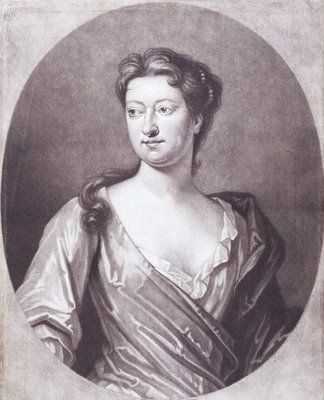 Two young women of marriageable age.
Two young women of marriageable age.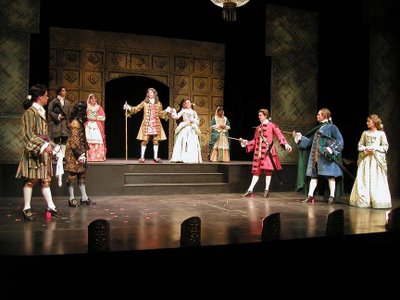
 Australia, in July 2003 called it a “wonderful romp” and a “witty, romantic, and strong play.” (This link is fun because it refers back to a 1796 production of The Busybody in the penal colony of Sydney Cove for an audience of free settlers, officers, officials, and their wives, who would probably have seen the play back in the old country. Apparently the convicts' acting was of "high quality" and the theatre owner--who had been transported to Australia for housebreaking and highway robbery--found himself quite wealthy! An English newspaper reported with astonishment that “His sentence has been expired two or three years, but he does not wish to return at present, being in a fair way of making a rapid fortune”!)
Australia, in July 2003 called it a “wonderful romp” and a “witty, romantic, and strong play.” (This link is fun because it refers back to a 1796 production of The Busybody in the penal colony of Sydney Cove for an audience of free settlers, officers, officials, and their wives, who would probably have seen the play back in the old country. Apparently the convicts' acting was of "high quality" and the theatre owner--who had been transported to Australia for housebreaking and highway robbery--found himself quite wealthy! An English newspaper reported with astonishment that “His sentence has been expired two or three years, but he does not wish to return at present, being in a fair way of making a rapid fortune”!)
